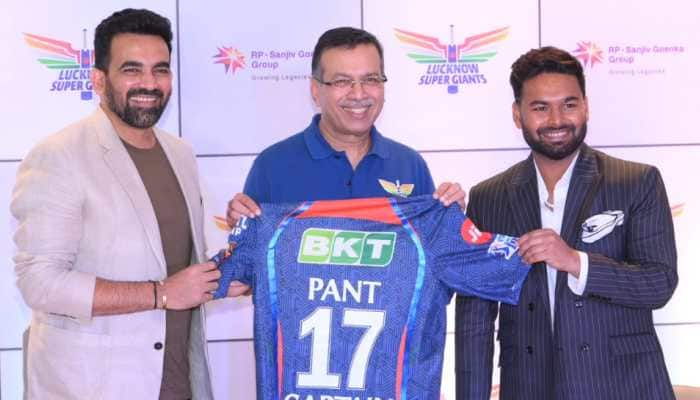GST closer to July 1 rollout: All you need to know
Finance Minister Arun Jaitley on Wednesday moved four Bills for consideration and passage in the Lok Sabha to give effect to the Goods and Services Tax (GST).
Trending Photos
)
New Delhi: Finance Minister Arun Jaitley on Wednesday moved four Bills for consideration and passage in the Lok Sabha to give effect to the Goods and Services Tax (GST).
All four of these legislations will have to be passed by Parliament and one by each of the state assemblies to turn India into one market with a single tax rate.
The Bills are the Central Goods and Services Tax Bill, 2017, the Integrated Goods and Services Tax Bill, 2017, the Goods and Services Tax (Compensation to States) Bill, 2017 and the Union Territory Goods and Services Tax Bill, 2017.
Following are some key features of the Bills
-Levy of GST
The Centre will levy Central GST (CGST) and the states will levy State GST (SGST) on the supply of goods and services within a state. The Centre will levy IGST in the case of (i) inter-state supply of goods and services, (ii) imports and exports, and (iii) supplies to and from special economic zones.
-Tax rates
The GST Council will recommend the tax rates with respect to CGST, SGST and IGST. The tax rates for each CGST and SGST will not exceed 20%. The tax rate of IGST will not exceed 40%.
In addition, a cess will be levied on certain goods and services to compensate states for revenue loss (discussed later). The Central GST Bill allows certain taxpayers with turnover less than Rs 50 lakh to pay CGST at a flat rate on turnover (composition levy), instead of the value of supply of goods and services.
-Date of liability
The liability to pay GST in relation to supply of goods and services will arise on the date of: (i) issue of invoice, (ii) receipt of payment, whichever is earlier.
-Exemptions from GST
The Centre may exempt certain goods and services from the purview of GST through a notification. This will be based on recommendations of the GST Council.
-Taxable amount (value of supply)
The GST will be levied on the supply of goods and services, whose value will include: (i) price paid on the supply, (ii) taxes and duties levied under other tax laws, (iii) interest, late fee, penalties for delayed payments, among others.
Supply of goods and services
-Place of supply of goods
The Integrated GST Bill provides separate rules for goods and services to determine the place (state) of their supply. In cases where a good has been physically moved, the place of supply will be the final destination of the good. In other cases, the place of supply will be where the good is received by the recipient.
-Place of supply of services
Provisions with respect to determining the place of supply of services vary depending upon the nature of services. For example, place of supply for immovable property (such as architects designing a building), will be the location of the immovable property. Specific provisions have also been made for supply of services such as catering, sporting events, transportation of goods, advertisement, telecommunications, among others.
-Input tax credit
Every taxpayer while paying taxes on outputs may take credit for taxes paid earlier by the supplier on inputs. However, this will not be applicable on supplies related to: (i) motor vehicles when used for personal consumption, (ii) supply of food, health services, etc. unless they are further used to make a supply.
Apportionment of IGST revenue
The IGST collected will be apportioned between the centre and the state where the goods or services are consumed. The revenue will be apportioned to the centre at the CGST rate, and the remaining amount will be apportioned to the consuming state.
Registration of taxpayers
Every person with a turnover exceeding Rs 20 lakh will have to register in every state in which he conducts business. This threshold will be Rs 10 lakh for special category states (i.e. Himalayan and North-Eastern states). A person may have multiple registrations for different business verticals in a state.
Returns
Every taxpayer should self-assess and file tax returns on a monthly basis by submitting: (i) details of supplies provided, (ii) details of supplies received, and (iii) payment of tax. In addition to the monthly returns, an annual return will have to be filed by each taxpayer.
Refunds and welfare fund
Any taxpayer may apply for refund of taxes in cases including: (i) payment of excess taxes, or (ii) unutilised input tax credit. The refund may be credited to the taxpayer, or to a Consumer Welfare Fund under certain circumstances.
Compensation to states for revenue loss
-Compensation to states on loss of revenue: States will be compensated by the centre for loss of revenue, due to the implementation of GST. Compensation will be provided for a period of five years from when the State GST Act comes into force. The compensation will be calculated and provided in the following way:
-Projected growth rate and base year: The compensation amount will be calculated using revenue collections in 2015-16 as the base year. A growth rate of 14% per annum over the base year will be assumed. The base year tax revenue will consist of the states’ tax revenues from: (i) Value Added Tax (VAT), (ii) central sales tax, (iii) entry tax, octroi, local body tax, (iv) taxes on luxuries, and (v) taxes on advertisements, among others. Revenue arising in relation to supply of alcohol for human consumption and certain petroleum products, will not be accounted in the base year revenue.
-Calculation and release of compensation: The compensation payable to a state will be provisionally calculated and released at the end of every two months. An annual calculation of the total revenue will be undertaken, which will be audited by the Comptroller and Auditor General of India.
-Levy and compensation of GST compensation cess: A GST Compensation Cess may be levied on the supply of certain goods and services, as recommended by the GST Council. The receipts from the cess will be deposited in a GST Compensation Fund. The receipts from the cess will be used for providing compensation to states for loss of revenue due to the implementation of GST.
The cess will be capped at: (i) 135% for pan masala, (ii) Rs 400 per tonne for coal, (iii) Rs 4,170 + 290% per 1,000 sticks of tobacco, and (iv) 15% for all other goods and services including motor cars and aerated water.
-Any unutilised money in the Compensation Fund at the end of the compensation period will be shared between the centre and states in the following manner: (i) 50% of the fund to be shared between the states in proportion of their SGST revenues, and (ii) the remaining 50% will be part of the centre’s divisible pool of taxes.
-Prosecution and appeal: For offences such as mis-reporting of: (i) goods and services supplied, (ii) details furnished in invoices, a person may be fined, imprisoned, or both by the CGST Commissioner. Such orders can be appealed before the Goods and Services Tax Appellate Tribunal, and further before the High Court.
-Transition to the new regime: Taxpayers with unutilised input tax credit obtained under the current central excise and state VAT laws may utilise it under GST. In addition, businesses may also avail input tax credit on stock purchased before the implementation of GST.
Other provisions in the Bills
-Anti-profiteering measure: The central government may by law set up an authority to examine if reduction in tax rate has resulted in commensurate reduction in prices of goods and services. The powers of the authority will be prescribed by the government.
-Compliance rating: Every taxpayer shall be assigned a GST compliance rating score based on his record of compliance with the provisions of this Bill. The compliance rating score will be updated at periodic intervals and be placed in the public domain.
Stay informed on all the latest news, real-time breaking news updates, and follow all the important headlines in india news and world News on Zee News.
Live Tv







)
)
)
)
)
)
)
)
)
)
